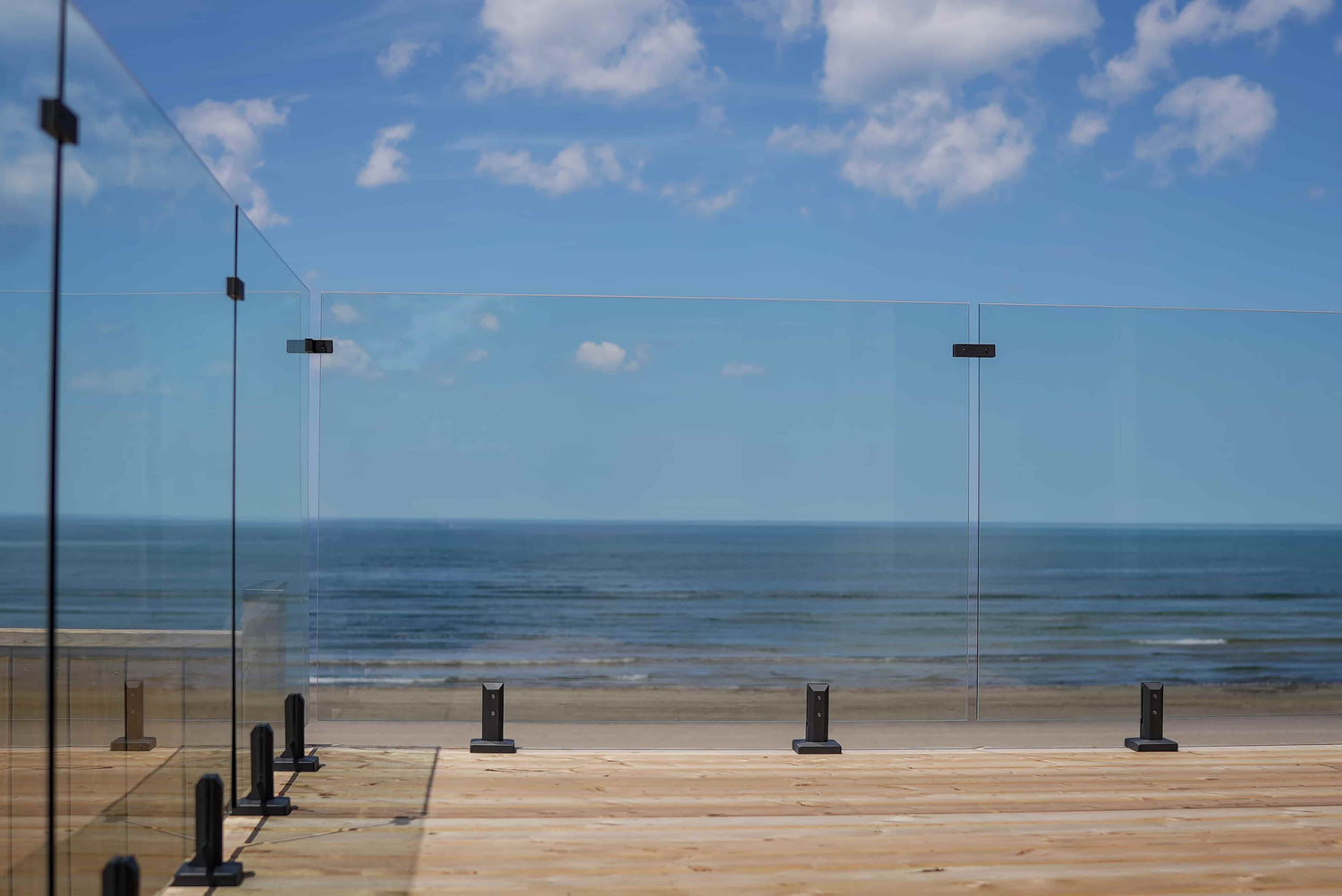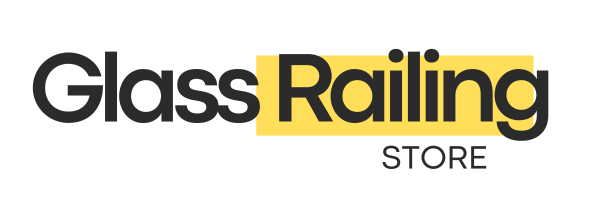Wyoming Building Code for Glass Railings

Imagine enjoying your morning coffee on a deck that looks out over the Grand Tetons. The only thing standing between you and one of the most magnificent views in America is a piece of crystal-clear glass. Glass railings have transformed Wyoming architecture by providing a barrier-free way for businesses and households to display the state's breathtaking scenery. However, many people are unaware that installing these gorgeous safety barriers is more complicated than just choosing gorgeous glass and calling it a day. Certain, non-negotiable criteria found in Wyoming's construction codes have the power to make or ruin your project.
Understanding Wyoming's glass railing building codes isn't just about compliance; it's about safeguarding your investment, making sure your family is safe, and creating the unhindered views you've always wanted. One mistake with glass selection or structural support could result in expensive reinstallation, failed inspections, or worse, safety hazards.
Understanding Wyoming's Glass Railing Code Framework
Wyoming has adopted the International Building Code 2024 as the foundation for its building regulations, with the Wyoming Building Code 2024 incorporating specific amendments and additions tailored to the state's unique environmental conditions. The glass railing requirements fall primarily under Chapter 24 (Glass and Glazing) and Chapter 16 (Structural Design), with Section 2407 specifically addressing glass in handrails and guards.
Enforcing these construction and fire safety requirements is the responsibility of the Wyoming State Fire Marshal's Office, which inspects residential, commercial, and industrial properties to make sure structures adhere to safety regulations. Glass guards and handrails are explicitly governed by Section 2407 of the Wyoming Building Code, which lays out thorough specifications for installation techniques, safety glazing, and structural construction.
Working with professional glass railing installation services can help ensure your project meets all Wyoming code requirements while achieving the desired aesthetic results.
Load Requirements and Structural Design Standards
In Wyoming, glass railings must adhere to strict structural specifications in order to survive the stresses that they can experience from both routine use and severe weather. According to Section 4.5.1 of ASCE 7, the code mandates that guards and handrails be built to withstand a concentrated load of 200 pounds applied at any point along the top rail. Furthermore, a linear load of fifty pounds per linear foot applied horizontally in either direction must be supported by these systems.
Instead of requiring the combination of concentrated and linear loads needed for commercial purposes, Wyoming code permits simplified loading requirements for residential uses in single- and two-family homes, requiring only a single concentrated load of 200 pounds.

Stress Limitations for Glass Components
Specific stress constraints for glass components in guards and railings are introduced in the 2024 Wyoming Building Code. For heat-strengthened glass, calculated stresses resulting from needed loads must not above 3,000 psi, and for fully tempered glass, they must not surpass 6,000 psi. These figures provide glass components an inherent safety factor of four and correspond to one-fourth of the maximal stress-carrying capacities of each type of glass.
Selecting high-quality tempered glass options that meet Wyoming's strict stress requirements is essential for code compliance and long-term performance.
Safety Glazing Requirements and Glass Types
Wyoming's building code mandates that all glass used in guardrails and handrails must meet specific safety glazing requirements to protect occupants from injury in case of glass breakage. Glass used in guards and handrails must be laminated glass constructed of fully tempered or heat-strengthened glass and must comply with Category II of CPSC 16 CFR Part 1201 or Class A of ANSI Z97.1.
All glass types used in railing applications must have a minimum nominal thickness of 1/4 inch (6.4 mm). This criterion guarantees sufficient robustness and longevity for the rigorous uses that glass railings experience. When there is no walking surface underneath the glass guardrail or when any walking surface below is permanently shielded from the possibility of glass falling, the laminated glass requirement is the only exception.
Laminated glass is the recommended and frequently necessary option for the majority of glass railing applications in Wyoming. Laminated glass offers enhanced safety features in the event of breakage since it is composed of two or more pieces of glass that are linked to an intervening layer of durable plastic material. Single fully tempered glass may only be used in specific circumstances where there is no walking surface beneath the railing.
Choosing laminated safety glass solutions provides superior protection for Wyoming installations and ensures compliance with the most stringent safety requirements.
Structural Glass Baluster and Top Rail Requirements
The specifications for top rail systems and structural glass balusters are among the most important parts of Wyoming's glass railing regulation. When installing guards with structural glass baluster panels, a top rail or handrail must be added. This top rail must be supported by a minimum of three glass baluster panels or be supported in some other way so that it will stay in place in the event that one of the glass balusters fails.
The crucial safety issue of preserving barrier protection even in the event that individual glass panels fail is addressed by this criterion. In contrast to metal railings, which may flex or deform before failing altogether, the code acknowledges that glass, despite its strength, can collapse abruptly and totally.
Exception for Laminated Glass Panels
Wyoming code provides an important exception to the top rail requirement for certain laminated glass installations. An attached top rail or handrail is not required where the glass baluster panels are laminated glass with two or more glass plies of equal thickness and of the same glass type. However, these panels must be tested to remain in place as a barrier following impact or glass breakage in accordance with ASTM E2353.
The code requires that glass balusters not be installed without an attached handrail or guard, emphasizing that these systems must function as complete integrated units rather than individual components. Installing complete glass railing systems ensures proper support and code compliance while simplifying maintenance and future modifications.

Special Considerations for Wyoming's Climate
Glass railing installations in Wyoming have particular difficulties due to the state's distinct environment, which go beyond the requirements of the building code. The performance of glass railings may be impacted over time by the state's notable temperature fluctuations, strong winds, and UV exposure. In Wyoming, outside glass railings need to be built to handle the extra strains caused by wind loads, thermal expansion and contraction, and any weather-related impacts.
Because of Wyoming's wide temperature swings, glass railing design must carefully account for thermal expansion and contraction. The deflection criteria of the building code are essential for allowing for thermal movement. When glass is supported by frame members, the deflection limitations must not be greater than those stated in Section 1604.3.7. This ensures that the supporting structure can handle anticipated motions without putting undue strain on the glass panels.
The strong wind speeds in Wyoming necessitate careful consideration of wind load calculations when designing glass railings. Both the direct wind pressure on the glass panels and the dynamic impacts of wind loading on the entire railing system must be taken into consideration in the structural design. For glass railings on rooftop installations, balconies, or raised decks where wind exposure is maximized, this factor is especially crucial. Selecting weather-resistant glass railing solutions designed for Wyoming's challenging climate helps ensure long-term performance and reduces maintenance requirements.
Compliance and Enforcement
Building permits are typically required for glass railing installations, particularly when they are part of new construction or significant renovations. The permit process provides an opportunity for plan review and ensures that proposed installations meet all applicable codes before construction begins. Engineering guidelines provide detailed structural design requirements that help ensure compliance with Wyoming's building standards.
In Wyoming, glass railing installations must pass building inspections at different phases of construction. Rough inspections of support systems, final inspections of finished installations, and reviews of the foundation and structural framing are usually included in these inspections. Inspectors will confirm that all connections adhere to approved drawings, support systems are properly built and installed, and glass panels exceed safety glazing criteria.
Conclusion
The building code for glass railings in Wyoming offers a thorough foundation for installing glass railings in a safe and efficient manner across the state. Property owners and contractors can develop stunning glass railing systems that satisfy all safety regulations and complement Wyoming's varied architectural landscape by adhering to the IBC 2024-based standards, which include appropriate glass selection, structural design, and installation methods. Glass railing installations will offer years of safe, aesthetically pleasing service while being completely compliant with state building rules when you work with knowledgeable experts who are aware of the regulatory requirements as well as the particular difficulties presented by Wyoming's environment.
Frequently Asked Questions
1. What type of glass is required for railings in Wyoming?
Wyoming requires laminated glass constructed of fully tempered or heat-strengthened glass that complies with Category II of CPSC 16 CFR Part 1201 or Class A of ANSI Z97.1. The minimum thickness must be 1/4 inch (6.4 mm).
2. Do all glass railings need a top rail in Wyoming?
Yes, unless the glass baluster panels are laminated glass with two or more glass plies of equal thickness and the same glass type, and they pass ASTM E2353 testing to remain in place as a barrier after impact or breakage.
3. What load requirements must glass railings meet?
Glass railings must resist a concentrated load of 200 pounds at any point and a linear load of 50 pounds per linear foot. Residential applications may only require the concentrated load.
4. Are building permits required for glass railing installation?
Yes, building permits are typically required for glass railing installations, especially for new construction or significant renovations. Local building departments oversee the permitting process.
5. How do Wyoming's weather conditions affect glass railing requirements?
Wyoming's extreme temperatures and high winds require special attention to thermal expansion, wind load calculations, and deflection limits to ensure glass panels and support structures can accommodate environmental stresses.
Let customers speak for us

Glass Railing Near You
Discover how The Glass Railing Store has been delivering exceptional service to our customers, thanks to our dedicated and knowledgeable team and their love our glass railing products.







